Speleomantes strinatii
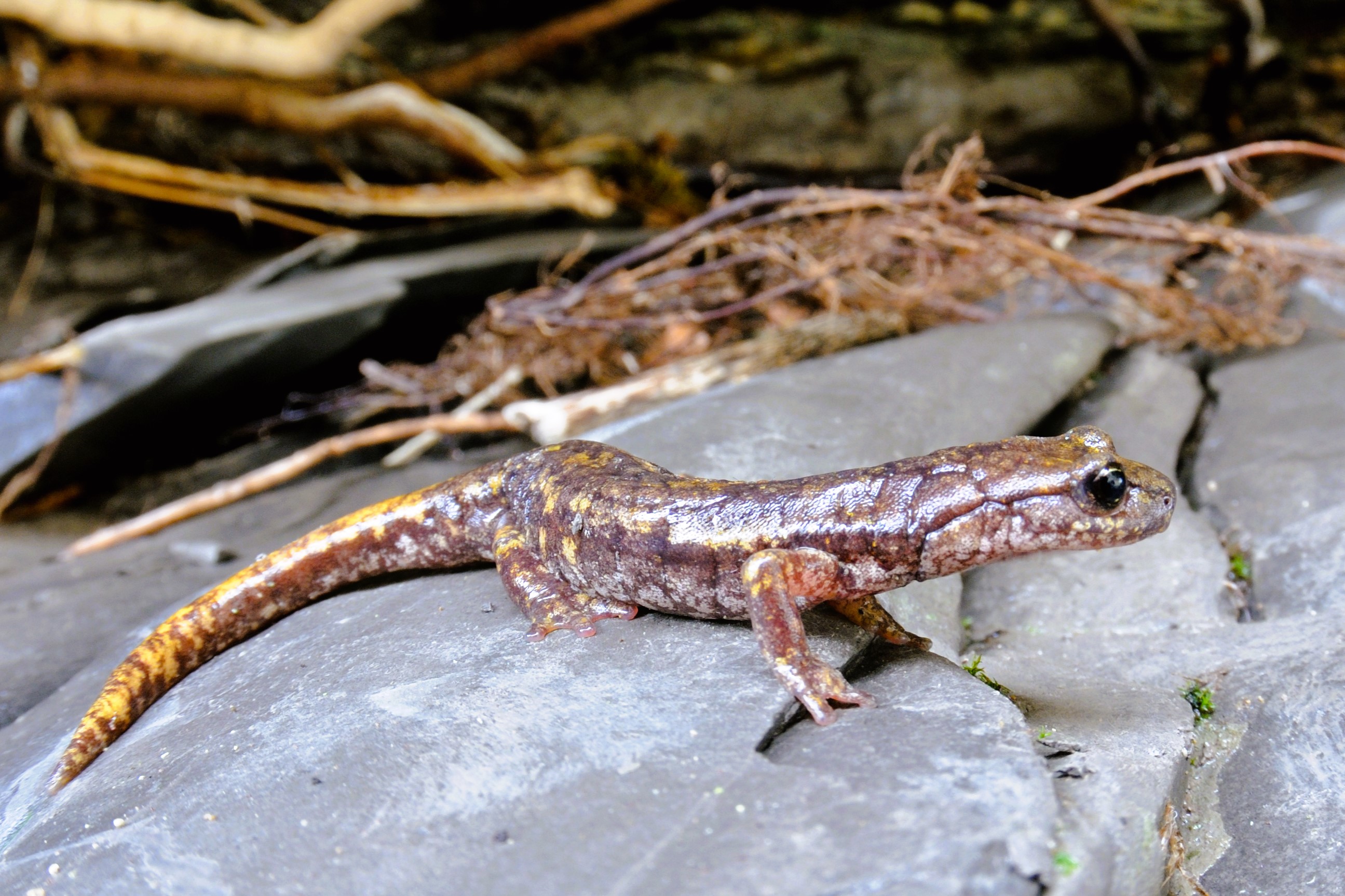


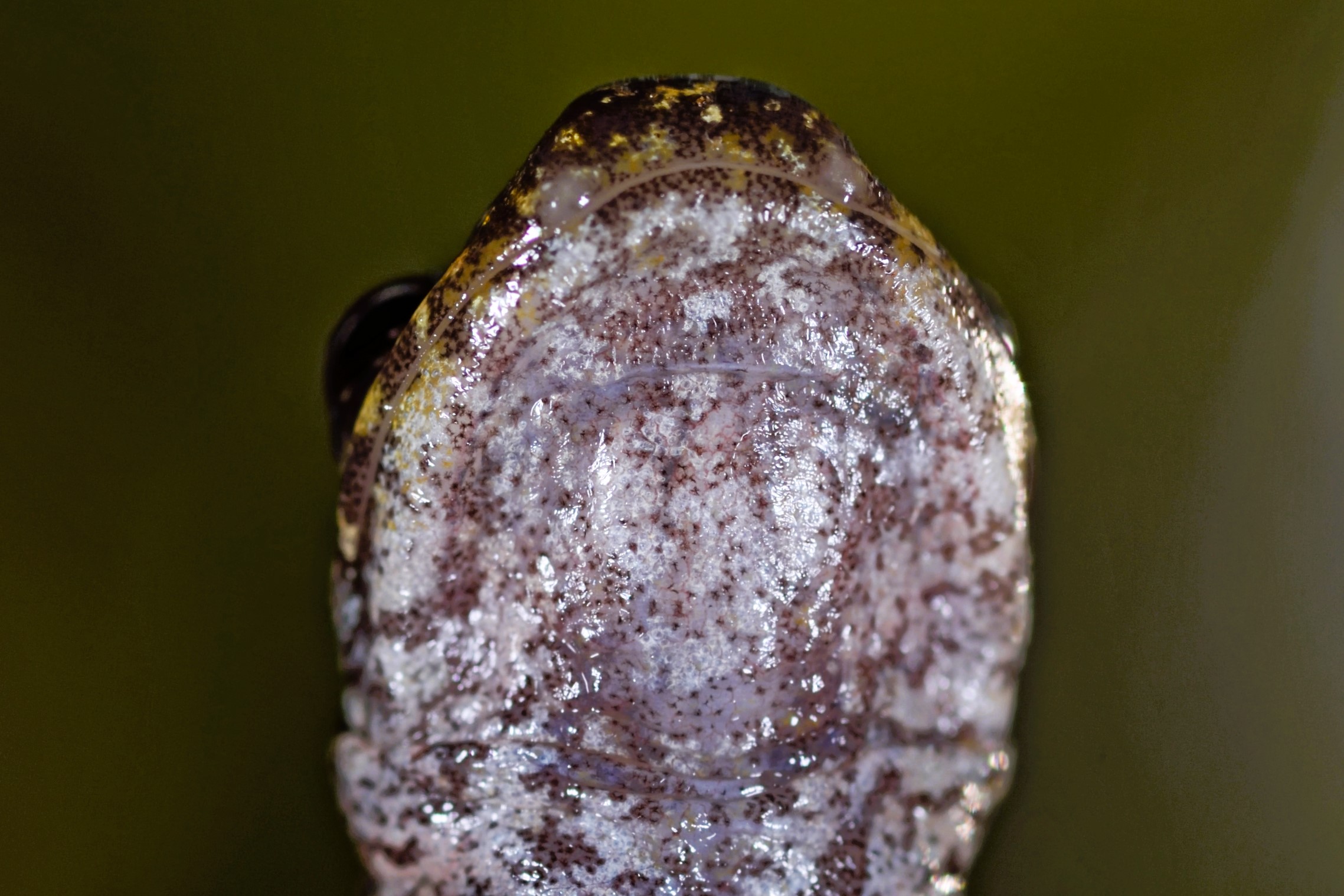
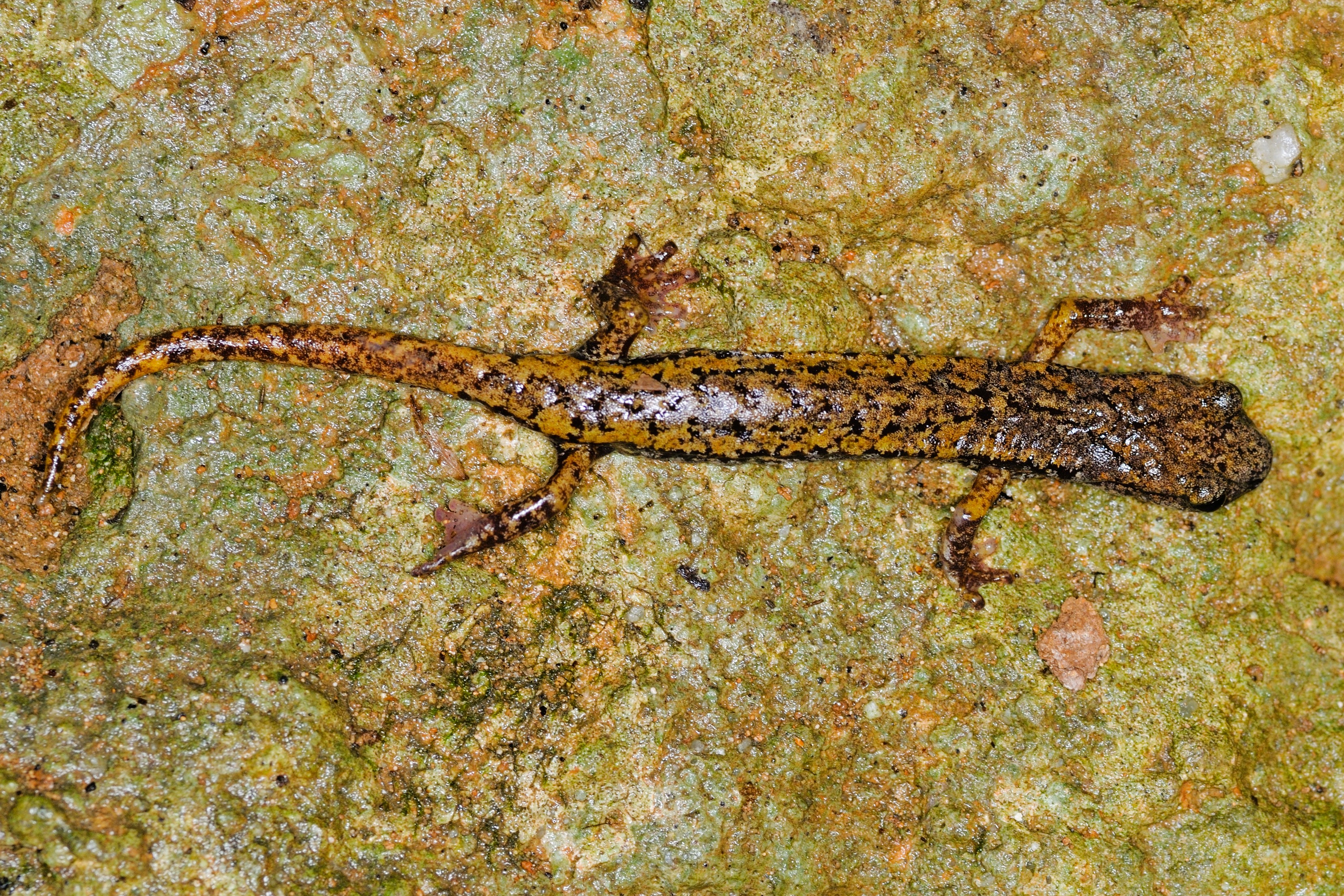
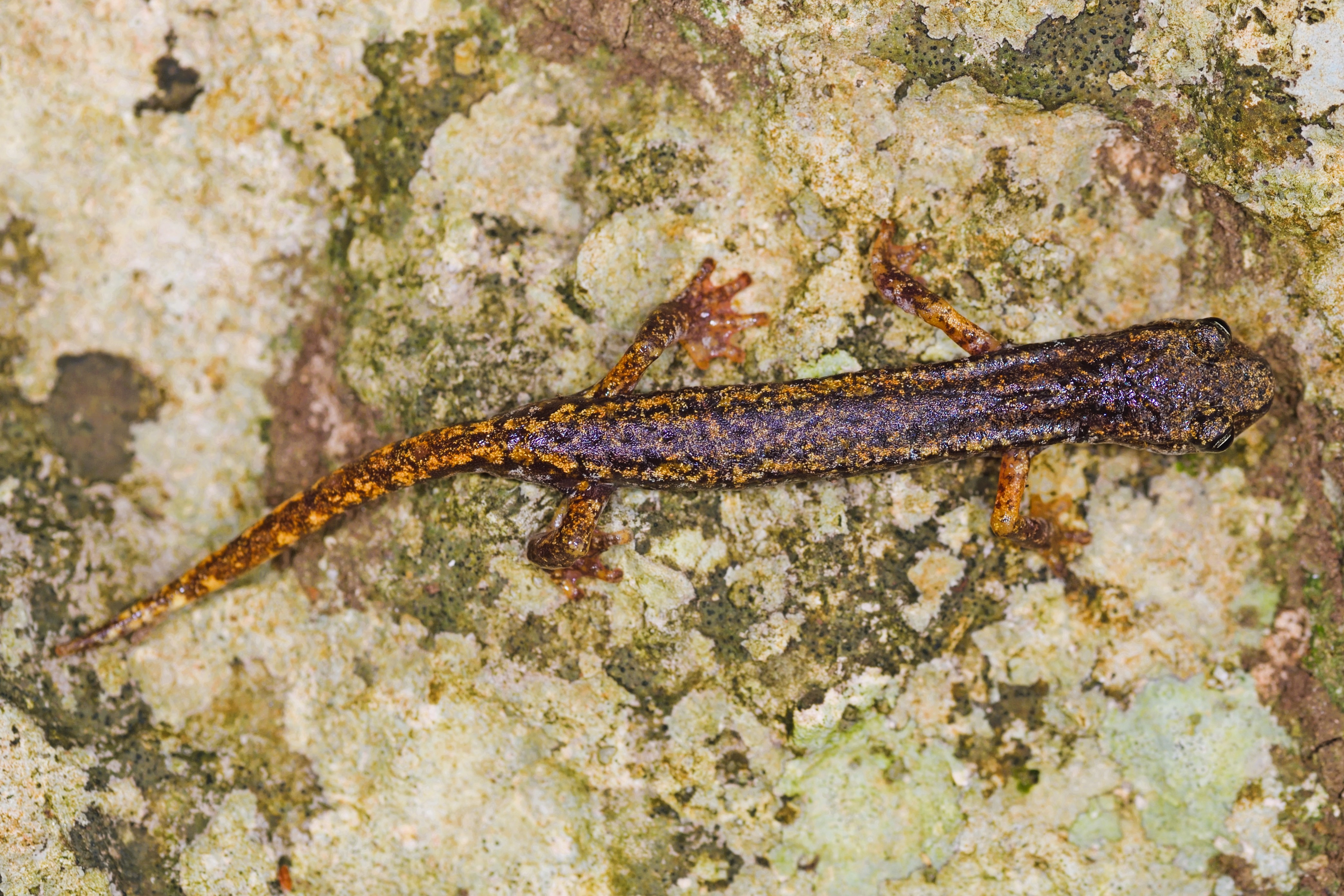
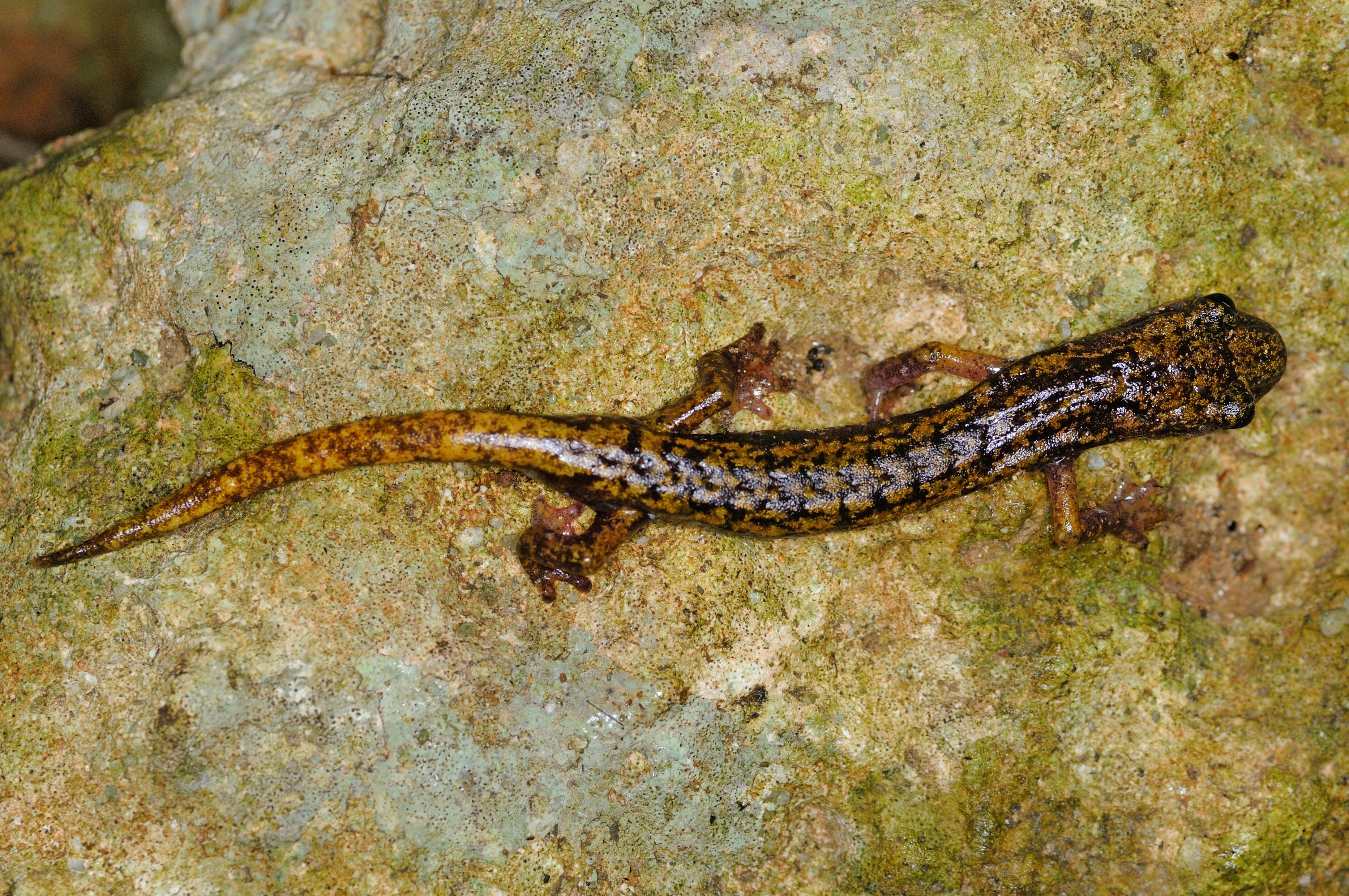
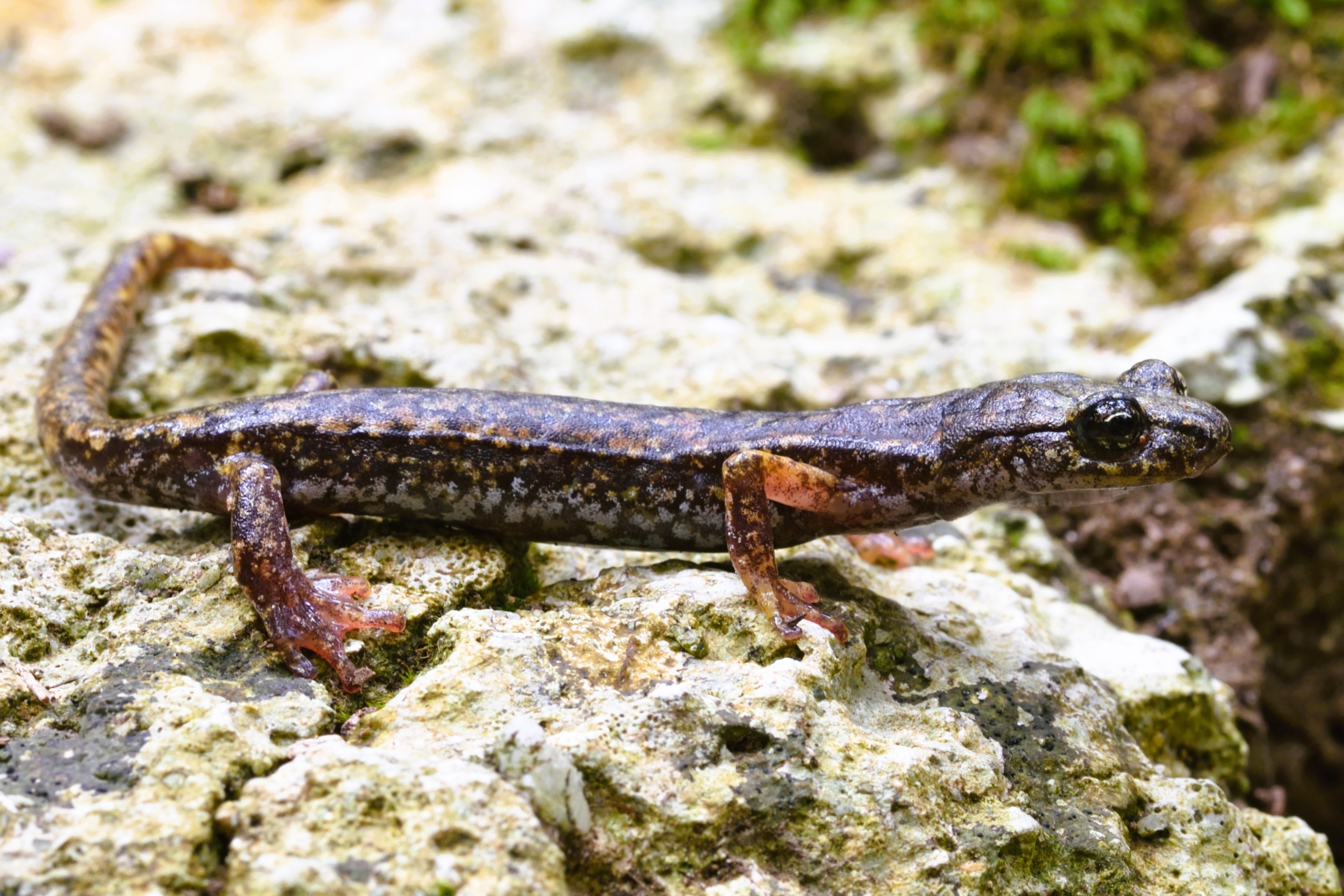
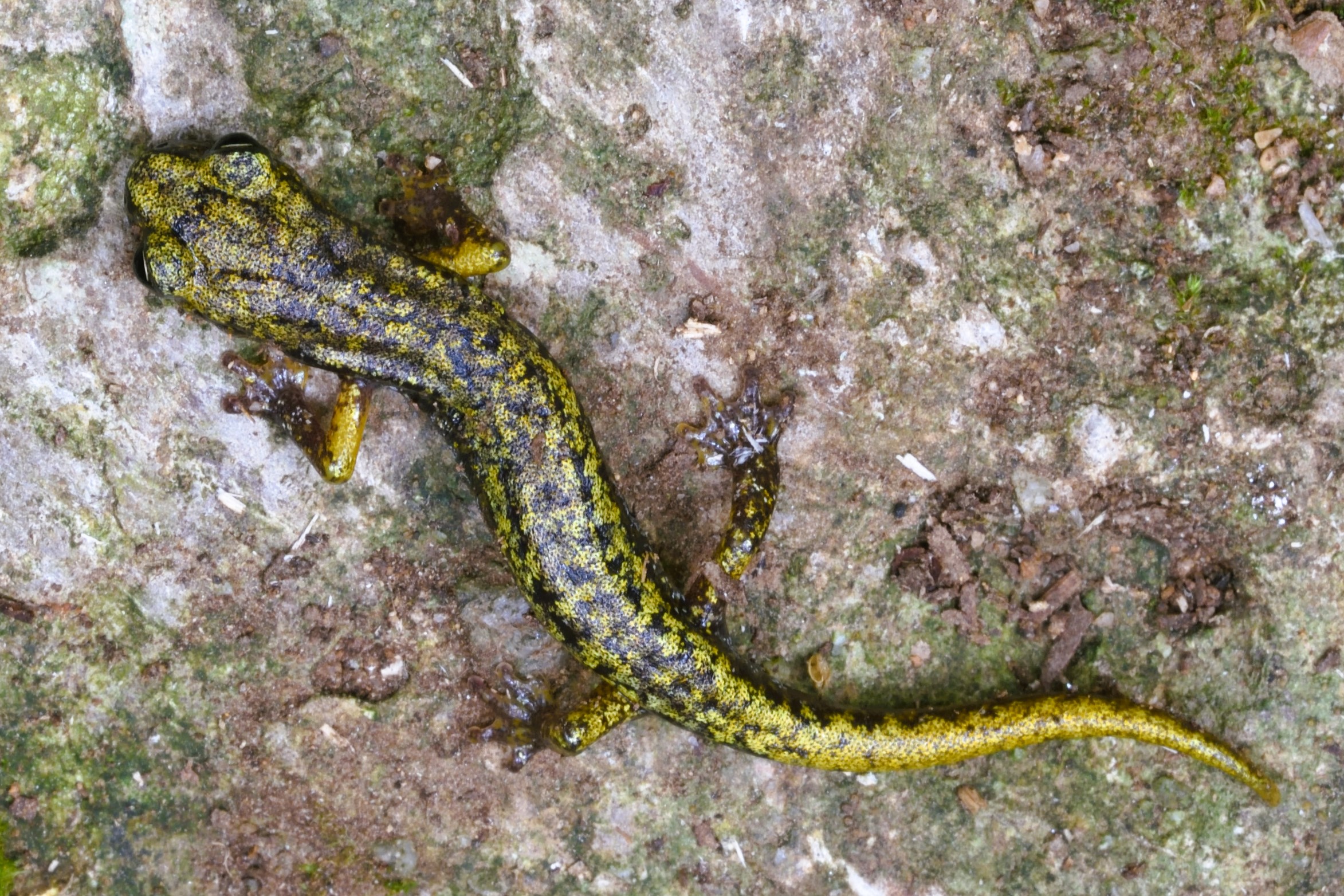
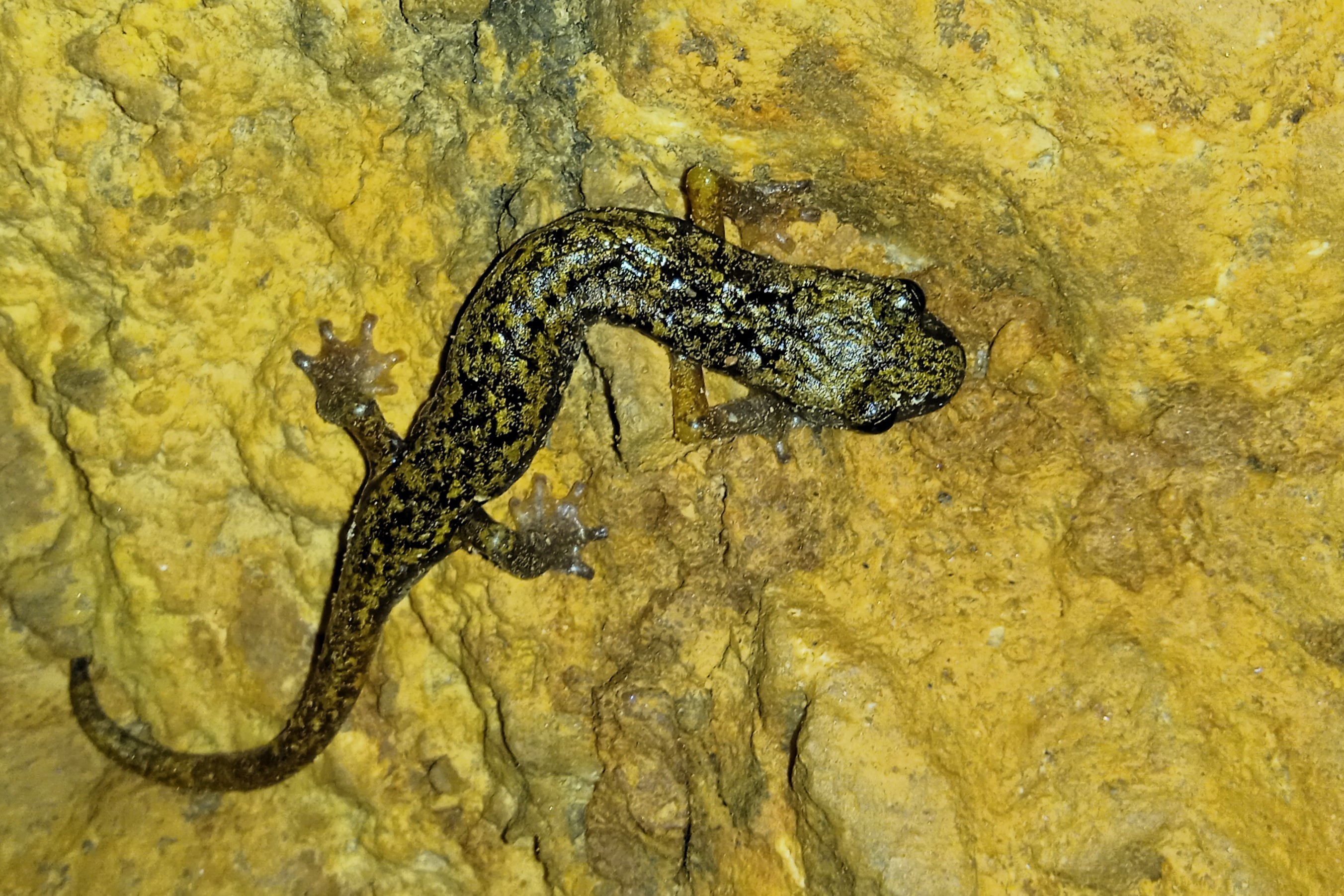
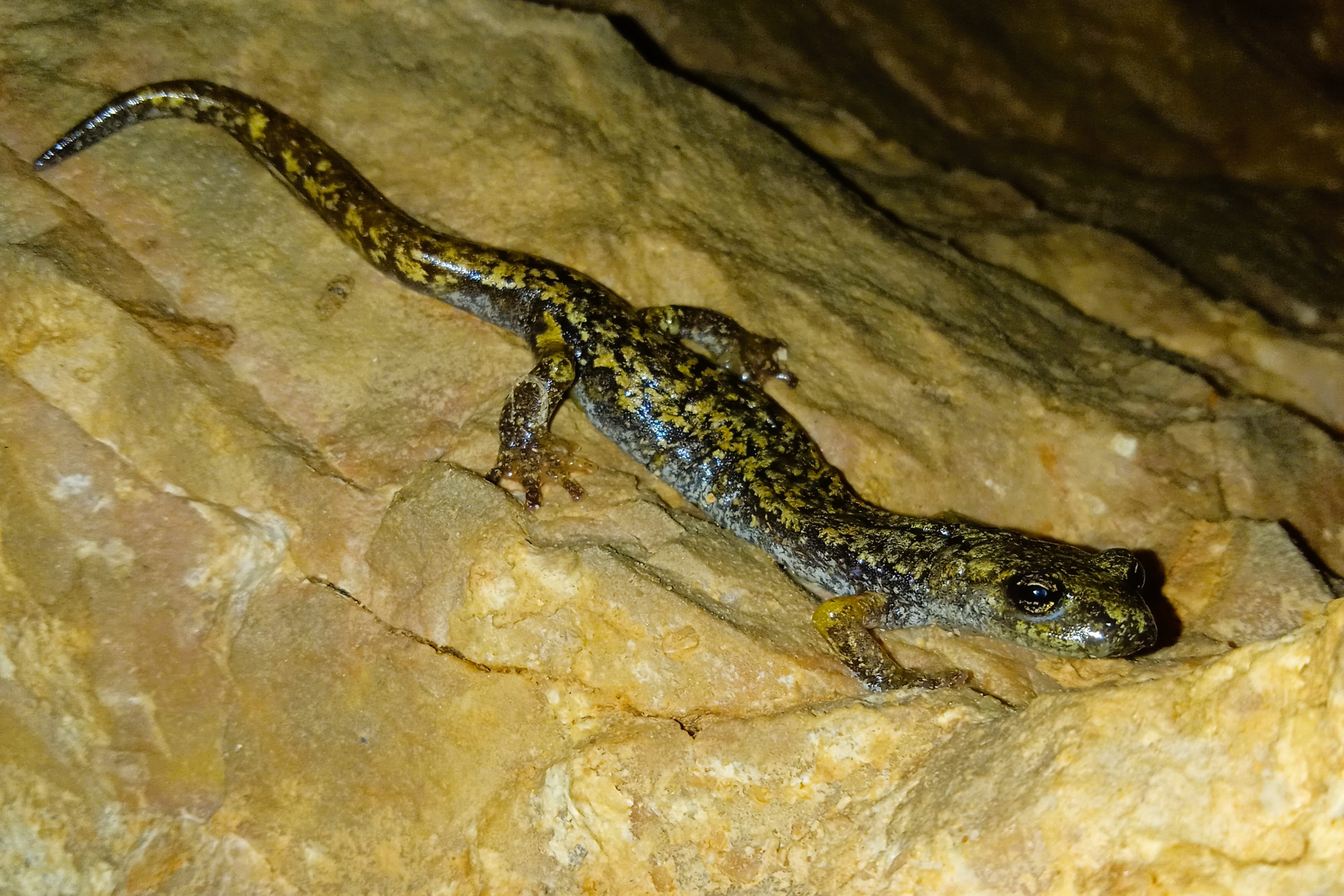
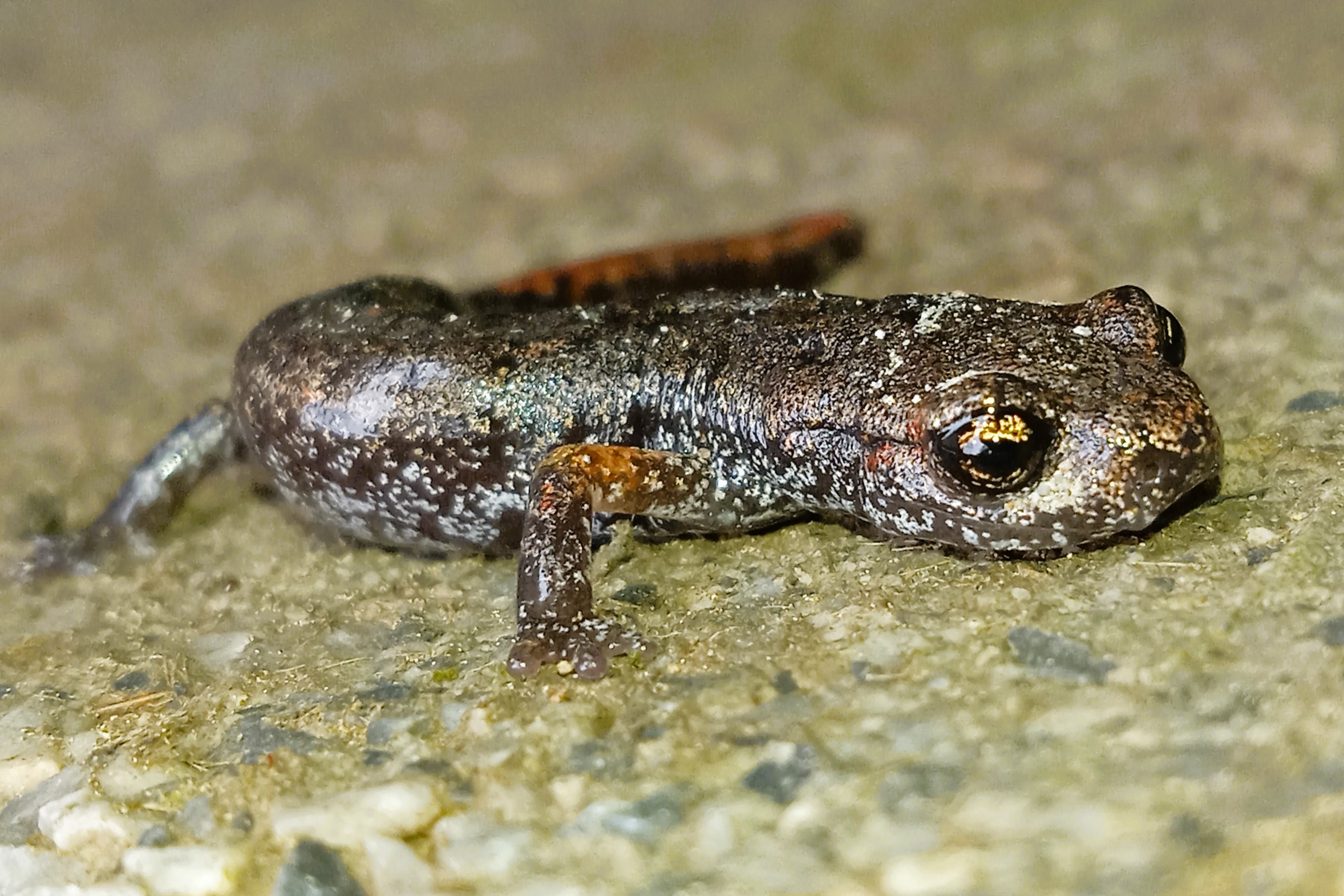
Amphibia → Urodela → Plethodontidae → Speleomantes → Speleomantes strinatii
Canferèstru, Cansinistru
Strinati's Cave Salamander is an extraordinary lungless urodele amphibian, capable of breathing exclusively through its skin and the mucous membrane of the mouth.
It reaches a length of 2.8–5.1 in (7–13 cm), including the tail, and has a dark gray underside contrasted by a brown or gray back with ochre spots that vary among individuals and populations.
The limbs are short, sturdy, partially webbed at the toes, and suited for exploring wet and slippery surfaces.
A key diagnostic feature is the nasolabial groove, visible under magnification: a thin channel extending from the corners of the mouth to the base of the nostrils, essential for transporting pheromones and for chemical perception of the environment.
Sexual dimorphism is evident in adult males, which have an elliptical mental gland used during courtship phases.
Speleomantes strinatii captures prey through a rapid extension of the stalked tongue, which can be projected far beyond the length of the head, ensuring swift captures even in the complete darkness of crevices.
During suitable periods it may also be observed outside caves, beneath stones, decaying logs, and near streams.
Strinati's Cave Salamander is the only Ligurian representative of the family Plethodontidae, a group mostly found in America and characterized by the absence of lungs.
In Italy, the genus Speleomantes includes seven species, four of which are endemic to Sardinia, while three taxa occur on the mainland: S. strinatii, S. ambrosii, and S. italicus.
Speleomantes strinatii is restricted to the Ligurian arc and neighboring areas of southern Piedmont, with fragmented populations in deep valleys, karst regions, and wooded areas.
In the province of Savona, it is found mainly on limestone substrates, from sea level up to about 4,300 ft (1,300 meters) in altitude, adapting to both inland karstic environments and coastal caves.
In the Beigua massif, it seems to be absent, despite an old and isolated report.
This amphibian prefers natural and artificial underground environments—caves, crevices, karst cavities, or abandoned mines—all marked by very high humidity and stable temperatures, often between 46 and 59 °F (8 and 15 °C).
However, on humid or rainy days, it can also be found outdoors, hidden under stones, logs, or in leaf litter in mesophilous woods and along stream banks.
The province of Savona, thanks to the widespread presence of limestone and karst phenomena, offers numerous favorable habitats for Speleomantes: here the animal shows great adaptability, making use of cracks, crevices, and any shelter able to retain moisture.
It more rarely frequents ophiolitic environments, due to the lower potential for suitable cavity formation.
Strinati's Cave Salamander is an extremely moisture-loving species, active only when relative humidity is close to saturation.
It prefers a discreet and mainly nocturnal life, but in mild seasons may also be seen during the day, especially in the deepest, most humid parts of caves.
Activity continues year-round, peaking in summer and decreasing during colder months.
Juveniles and adults use different microhabitats: juveniles tend to stay near cave entrances, where conditions are less stable but food is more accessible; adults prefer deeper, more protected recesses.
Reproduction occurs in spring and is characterized by a long courtship: the male embraces the female from behind, wrapping her head and neck, often caressing her chin.
After fertilization, the female lays 6 to 14 eggs in well-protected cavities in the soil, remaining next to the clutch until hatching (about 10 months later): this parental behavior is unique among European amphibians.
Strinati's Cave Salamander is a specialized predator of small terrestrial invertebrates.
Studies in the Ligurian Apennines revealed a diet dominated by Limoniid flies, often making up over 80% of prey.
The diet may occasionally include other insects (beetles, moths), spiders, and small terrestrial crustaceans.
The main threats to the species come from habitat alterations (such as pollution, cementing, excessive caving activity, and illegal collecting), along with increased periods of drought caused by climate change.
A secondary risk is the introduction of pathogens, including fungi responsible for chytridiomycosis (Batrachochytrium dendrobatidis), although no recent mass die-offs have been reported in the local population.
Speleomantes strinatii possesses the remarkable ability to regenerate lost limbs following trauma.
This phenomenon has been thoroughly studied both in the laboratory and in the wild, confirming its high regenerative plasticity, which contributes to the species’ success in fragile subterranean environments.